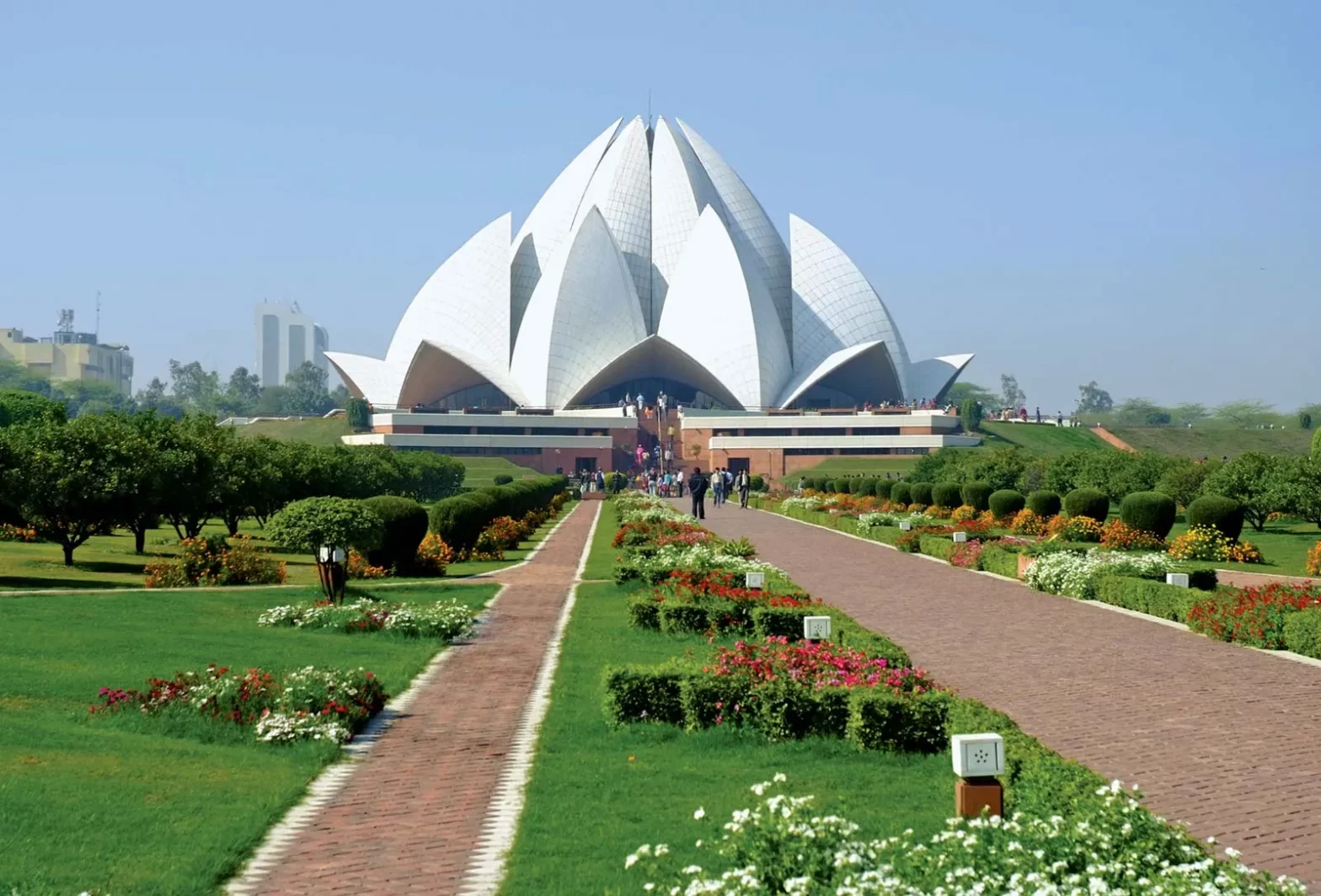The Lotus Temple, located in New Delhi, India, is a striking architectural marvel that transcends religious boundaries and promotes the ideals of unity, peace, and spirituality. As one of the most iconic landmarks in the city, this Bahá’í House of Worship attracts visitors from all around the world, inviting them to experience tranquility, contemplation, and a sense of oneness.
Unique Architectural Design: Designed by Iranian architect Fariborz Sahba, the Lotus Temple is renowned for its distinctive lotus-shaped structure. Its twenty-seven marble-clad “petals” radiate outward, creating a breathtakingly symmetrical and serene environment. The temple’s design is a fusion of modern and ancient architectural styles, emphasizing both aesthetic beauty and functional purpose.
Bahá’í House of Worship: The Lotus Temple is one of the seven Bahá’í Houses of Worship around the world. The Bahá’í Faith emphasizes the unity of all religions and the importance of harmony among different cultures and backgrounds. The Lotus Temple symbolizes this unity, offering a place where people of all faiths can come together to meditate, reflect, and pray.
Silent Contemplation: Visitors are invited to step into the Lotus Temple to experience a tranquil atmosphere conducive to meditation and contemplation. The temple’s interior is devoid of religious icons or altars, allowing individuals to find solace and seek their own connection with the divine, regardless of their beliefs.
Pristine Gardens: The Lotus Temple is set amidst beautifully landscaped gardens, enhancing the sense of tranquility and providing a serene environment for visitors to unwind. The gardens offer a peaceful retreat in the midst of the bustling city, inviting reflection and connection with nature.
Spiritual Gatherings and Events: While the Lotus Temple is primarily a place for silent meditation and personal reflection, it also hosts various events and gatherings that promote interfaith dialogue, social harmony, and community engagement. Seminars, discussions, and artistic performances often take place in the temple’s auditorium, fostering a sense of unity and understanding.
Symbol of India’s Pluralism: The Lotus Temple serves as a symbol of India’s rich diversity and pluralism. It exemplifies the nation’s ethos of religious tolerance and acceptance. By welcoming individuals from all walks of life, the temple echoes India’s core values of coexistence and mutual respect.
Conclusion: The Lotus Temple stands as an architectural and spiritual masterpiece that transcends boundaries and inspires people to explore their inner selves while connecting with others. Its unique design, serene ambiance, and emphasis on unity make it a truly exceptional place where the fragrance of devotion mingles with the harmony of humanity. As you enter its gates and step into its lotus-shaped sanctuary, you are invited to embark on a journey of self-discovery, peace, and shared understanding.

